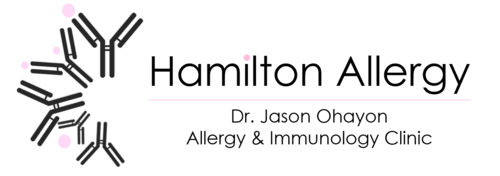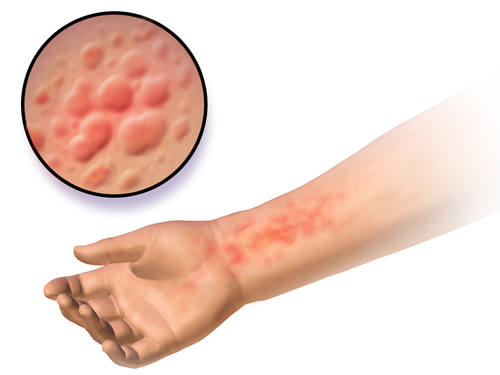Urticaria (“Hives”)
Hives, also known as urticaria (pronounced “ur-tuh-keh-ree-uh”), are a common skin rash that affects up to 20% of individuals throughout their lives. Hives are raised, itchy bumps that are red or skin-coloured and turn white (or “blanch”) in the centre when pressed. They can vary from the size of a pinprick to the size of a dinner plate. Most hives last less than 24 hours at one time, but may come and go over weeks to months. Eventually the majority of hive outbreaks do resolve with time.
WHAT ARE THE DIFFERENT TYPES OF HIVES?
Hives are generally classified into 3 main categories:
Acute (short-lived) urticaria: Acute urticaria generally occur immediately after exposure to certain triggers, which are usually allergic in origin, like foods, medications and even infections.
Chronic urticaria (CU): CU are hives that last more than 6 weeks and/or frequently recur. Causes of CU include inducible and spontaneous immune triggers, that may identify part of your body as “allergic” even though that cause may be “idiopathic” or “unknown.”
Inducible (physical) urticaria: Physical urticaria occur after the onset of a specific physical stimulus, such as pressure, cold, heat, exercise, or sun exposure.
CHRONIC URTICARIA SYMPTOM TRACKING SHEET
Individuals with suspected or diagnosed chronic urticaria can benefit from tracking symptoms using the following form: Urticaria Symptom Tracking Sheet

